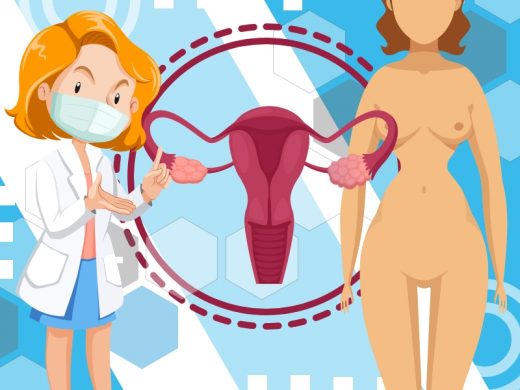
Ovarian cancer is the growth of cells that originates in the ovaries. The cells multiply quickly and can invade and destroy healthy body tissue. In the body, cells usually divide only if additional cells are needed for healthy functioning. However, at certain times the controls that regulate when a cell divides are lost. In this case, more and more cells accumulate without being ordered.
The cells eventually form a mass known as a tumor but note that not all tumors are cancer. When ovarian cancer first develops, it might not cause any noticeable symptoms. Nonetheless, it can send some warning signs such as:

- Abdominal swelling or bloating
- Quickly feeling full when eating
- Back pain and fatigue
- Weight loss
- Discomfort or pain in the pelvic area
- Changes in the menstrual cycle and flow
- Changes in bowel habits, such as constipation
- A frequent need to urinate
Types of Ovarian Cancer
- Epithelial ovarian carcinomas. These are the most common type of ovarian cancer. About 85% of these cancers involve the cells that cover the outer surface of the ovary. They spread first to the lining and organs of the pelvis and abdomen and then to other parts of the body.
- Germ cell tumors. These make up less than 2% of all ovarian cancers. Germ cell tumors begin on the reproductive cells. Ninety percent of patients with germ cell tumors survive five years after diagnosis. Women in their 20s and teenagers are at high risk of developing this type of cancer.
- Stromal cell tumors. These represent about 1% of all ovarian cancers. Stromal cell tumors form in the tissues that support the ovaries. This type of cancer is often found in the early stages. Vaginal bleeding is one of the most common signs of this condition.
Does Ovarian Cancer Reoccur?

Malignant cells reappear in the ovary after cancer treatments have been completed for some time, such as surgery or chemotherapy. When ovarian cancer recurs, it’s not re-staged. Ovarian cancer can recur in its original location, or it could occur elsewhere in the body.
It is most likely that ovarian cancer will recur due to a small number of remaining cancerous cells that survive the treatment process but aren’t detected on tests. After treatment, these cancer cells may grow into tumors. The signs of recurrent ovarian cancer vary from patient to patient.
The 5 Risk Factors of Ovarian Cancer
- Age and family history. The risk of ovarian cancer increases as you age. It is most often diagnosed in older adults. There is an increased risk of ovarian cancer if you have blood relatives who have been diagnosed with the disease.
- Obesity. Being overweight or obese increases the risk of ovarian cancer.
- Postmenopausal hormone replacement therapy. Taking hormone replacement therapy to control menopause signs and symptoms may increase the risk of ovarian cancer.
- Endometriosis. In endometriosis, tissue grown outside the uterus looks like the tissue that lines the inside of your uterus.
- Never having been pregnant. If you have never been pregnant, you may have an increased risk of ovarian cancer.









